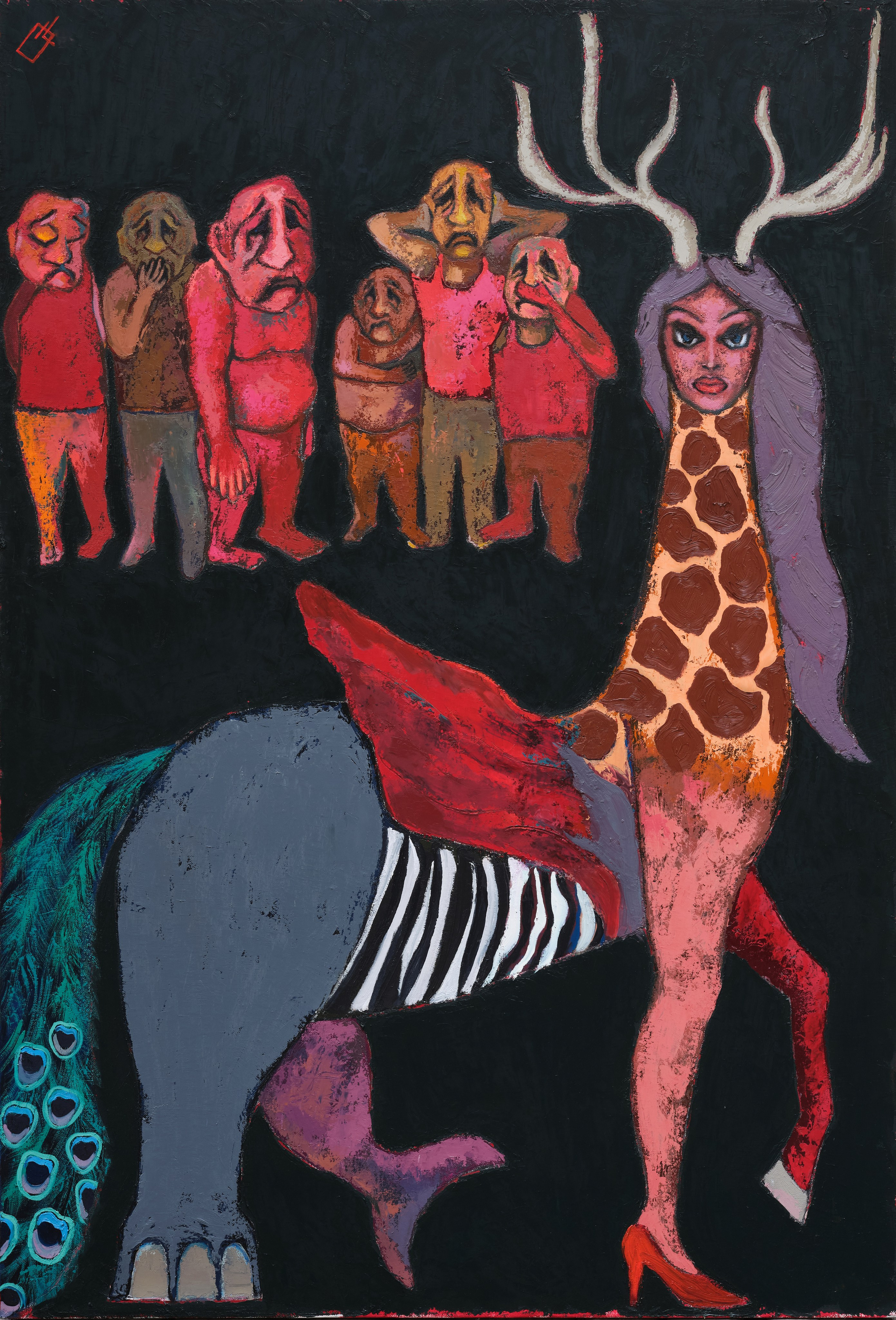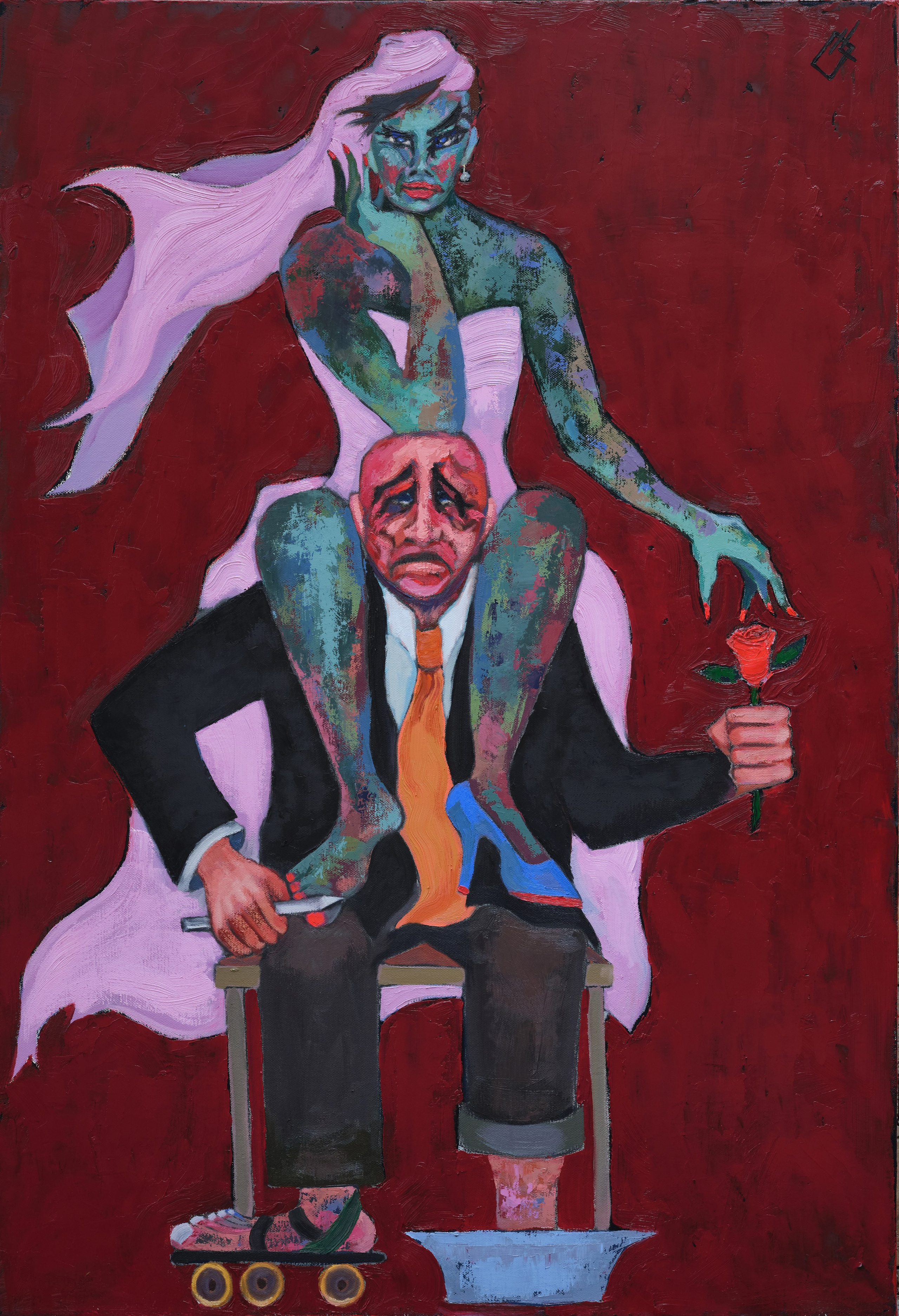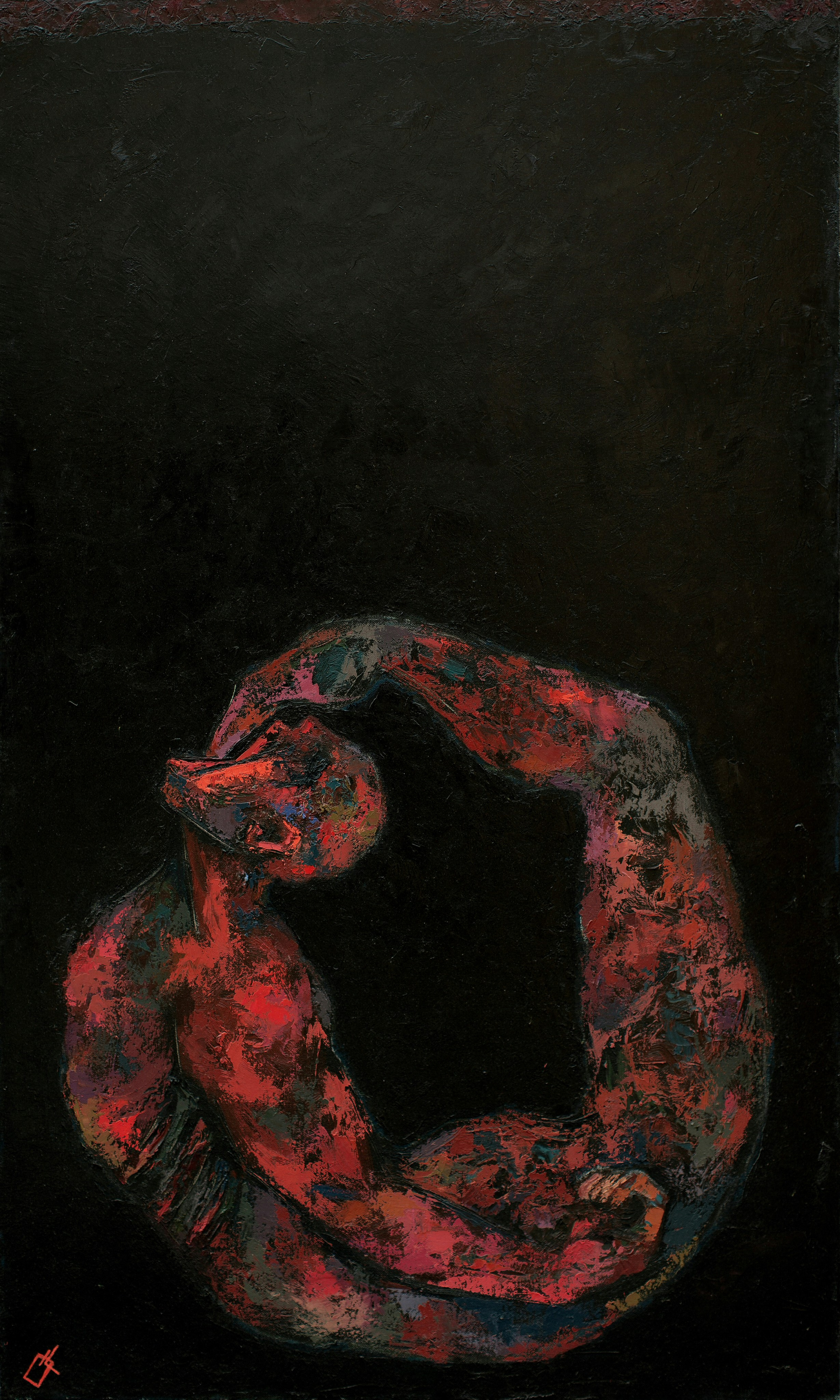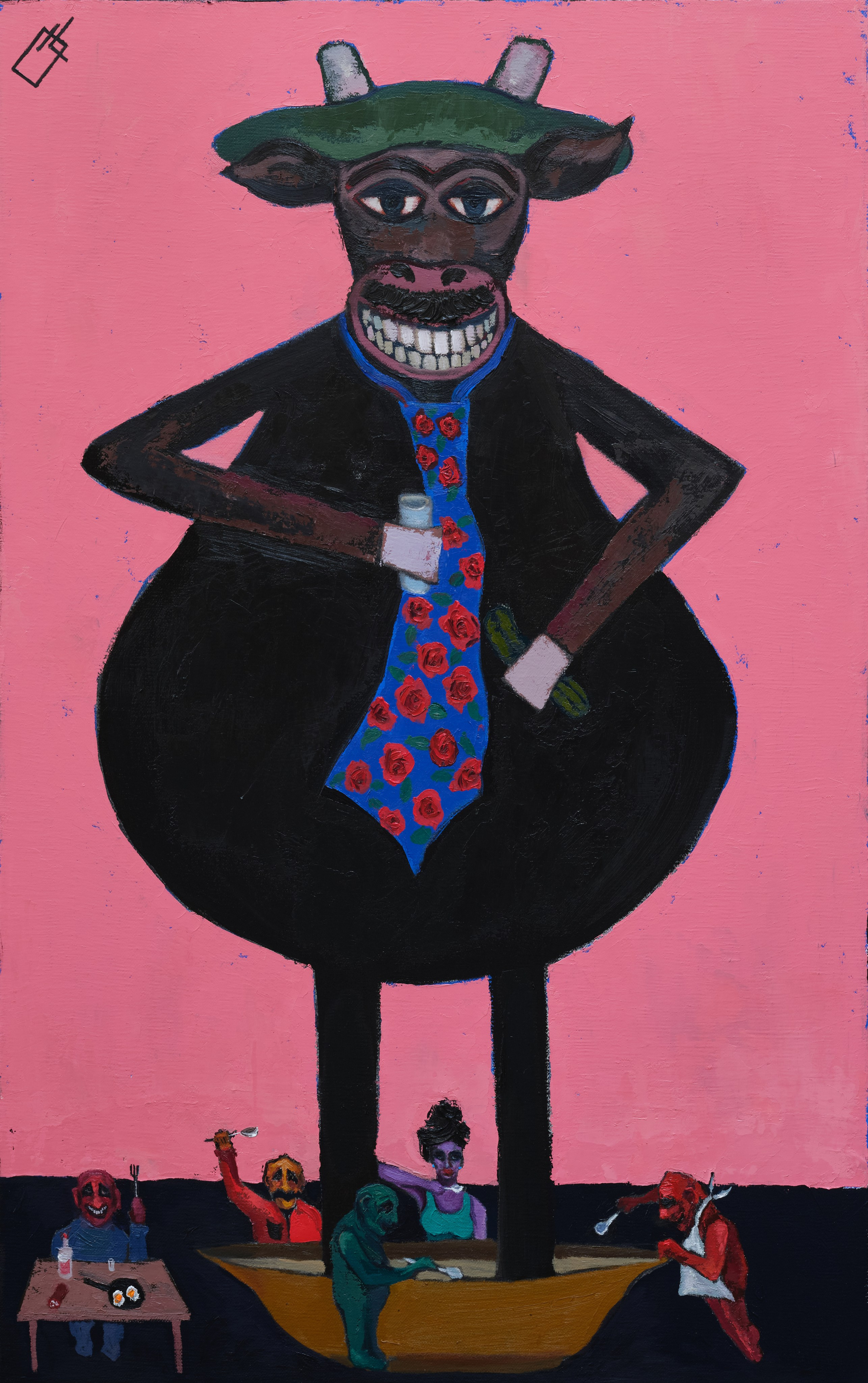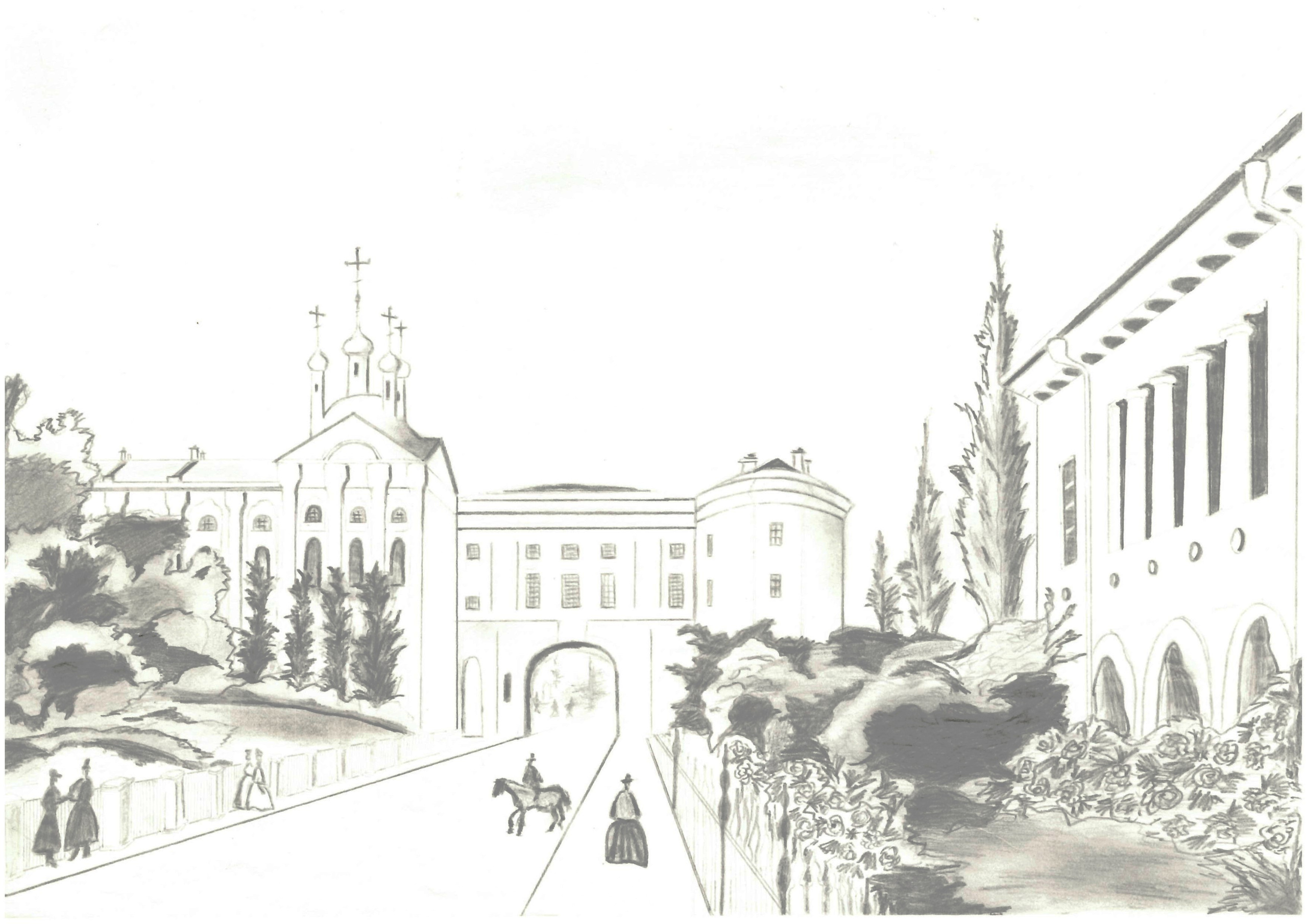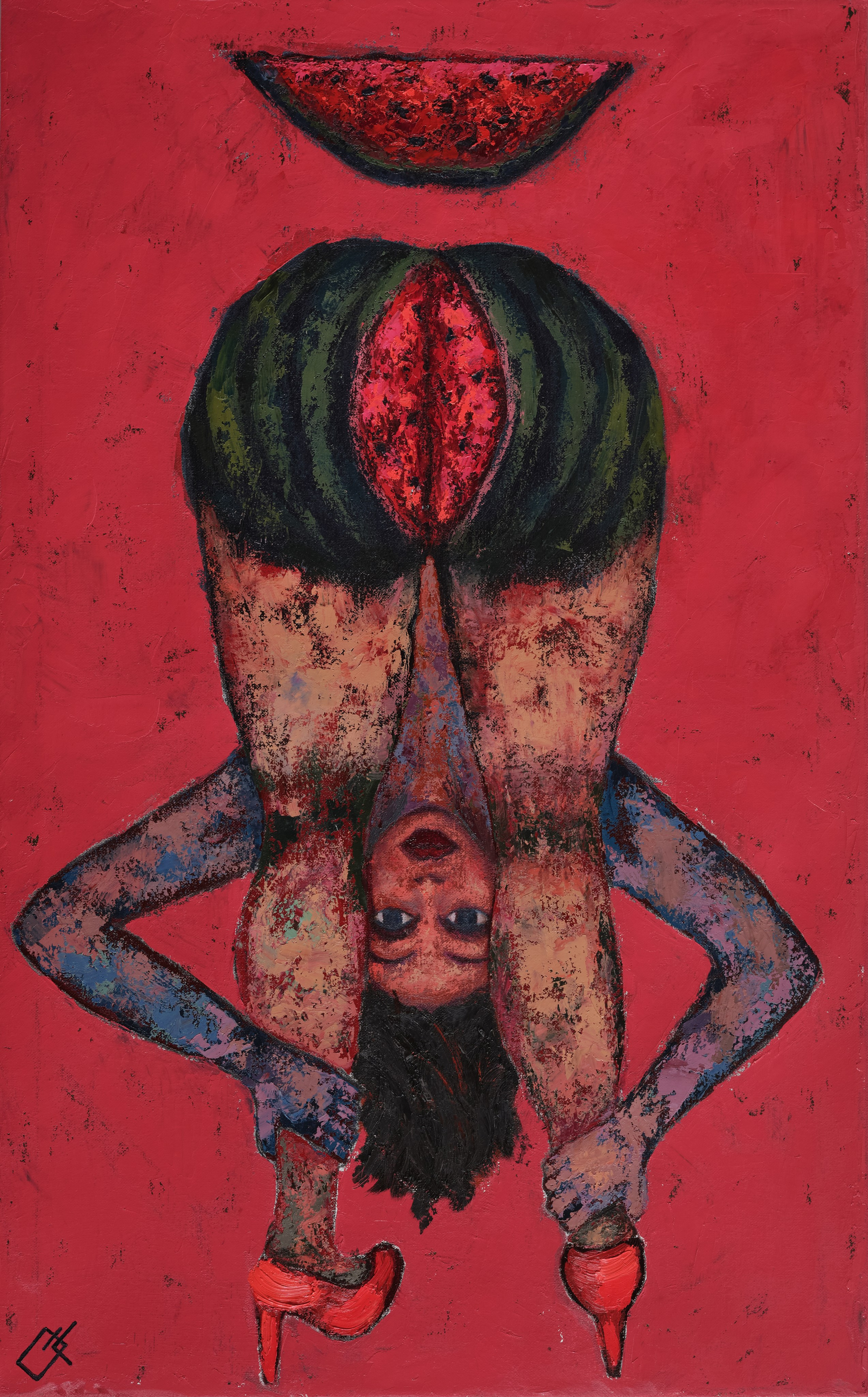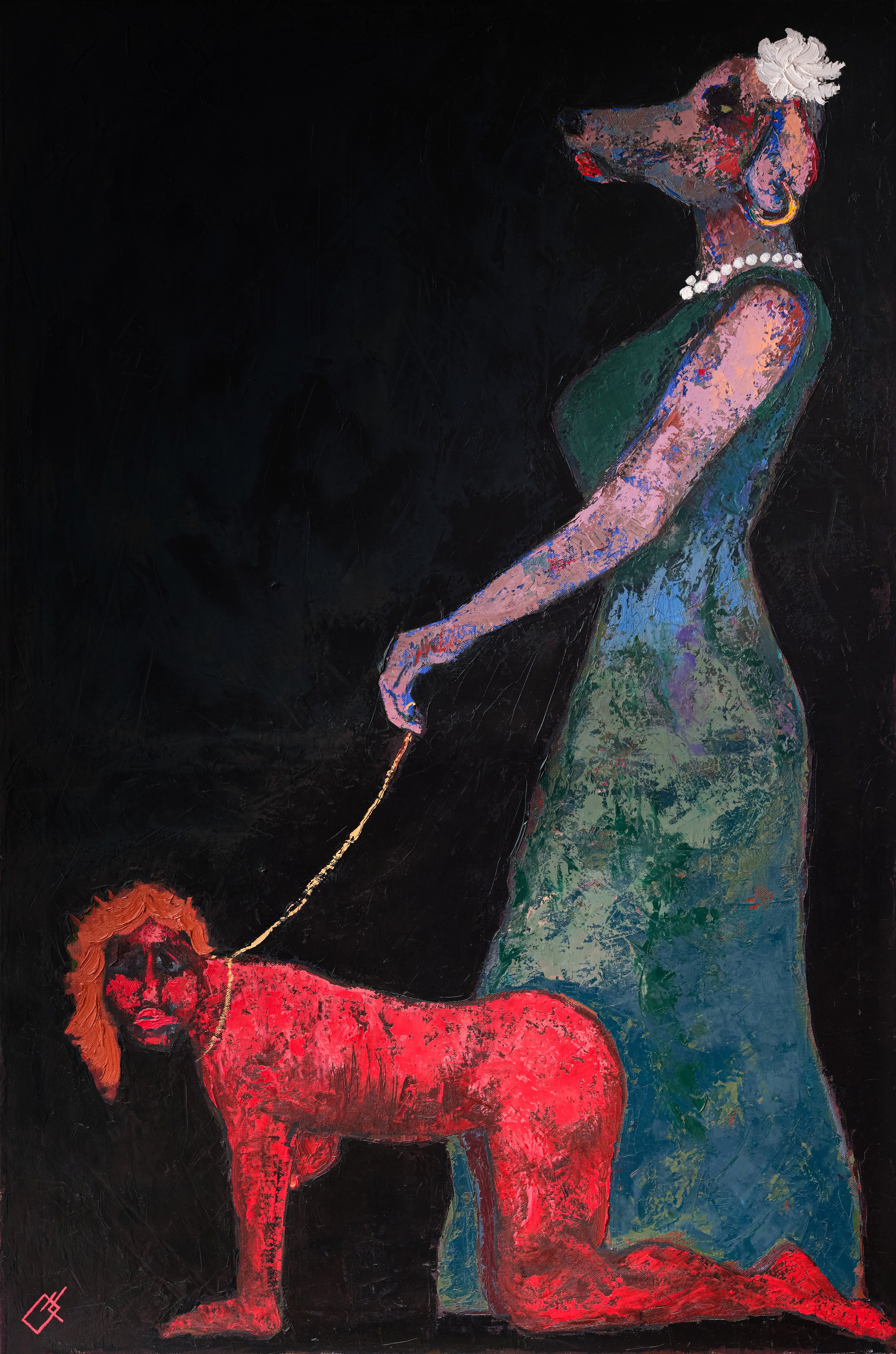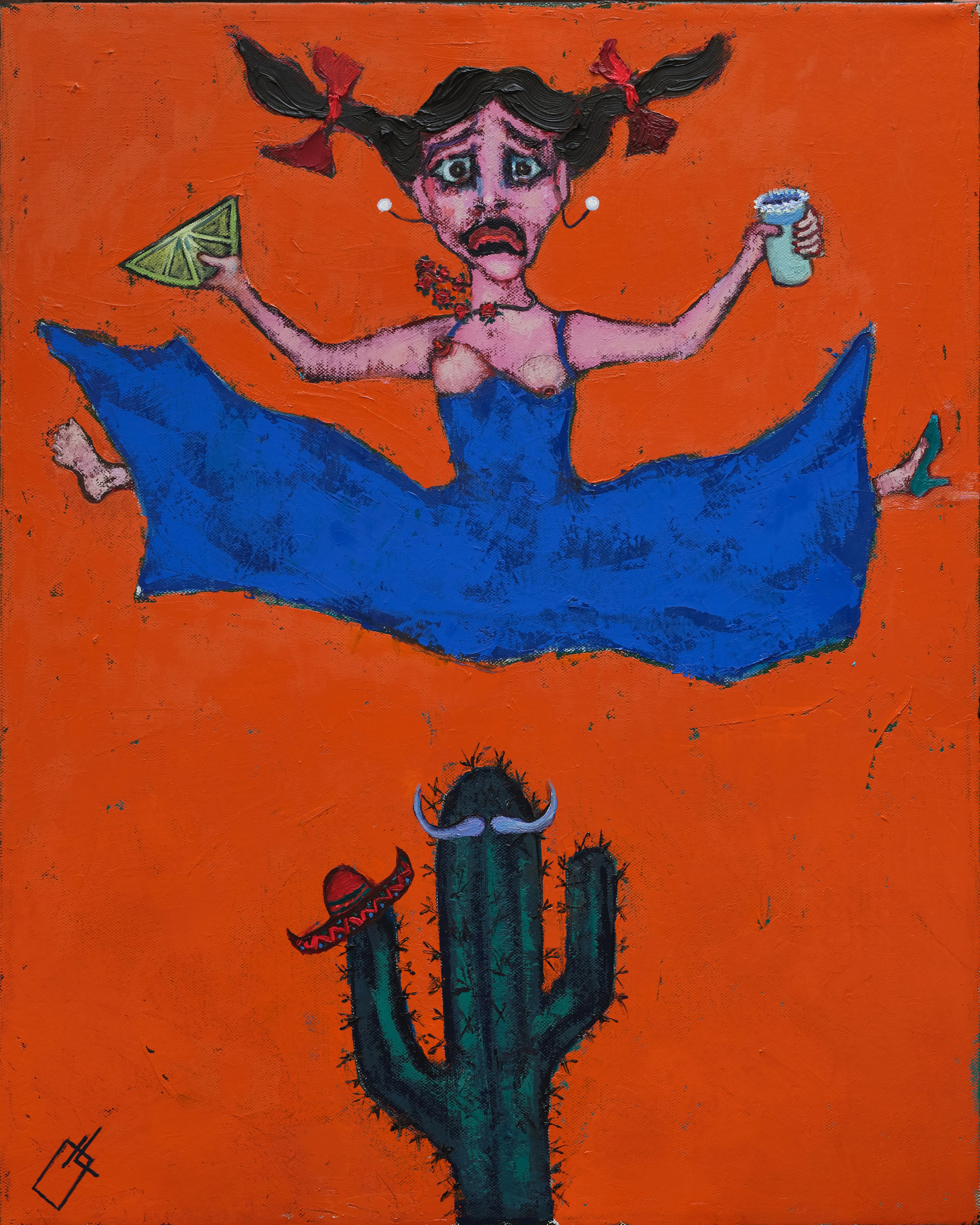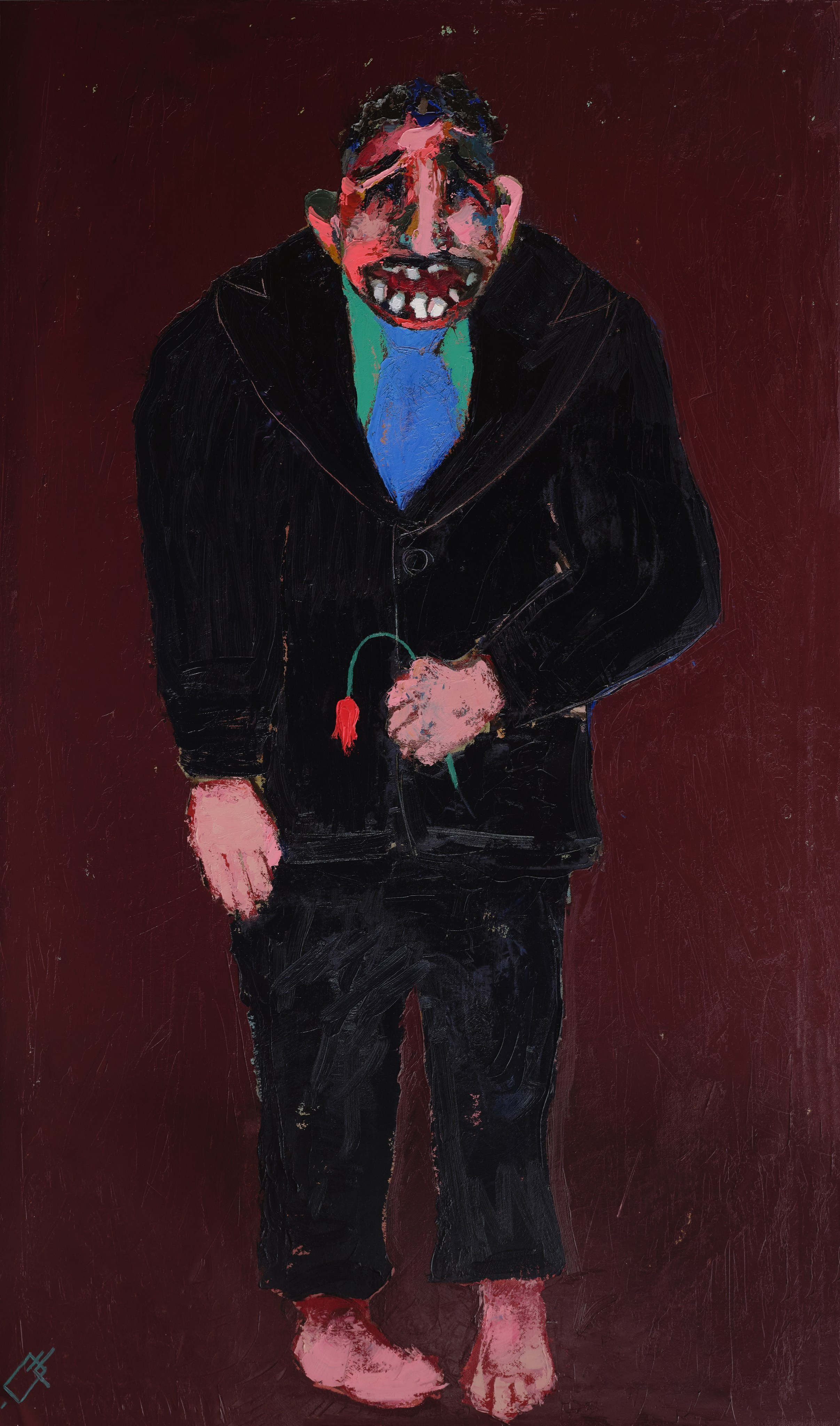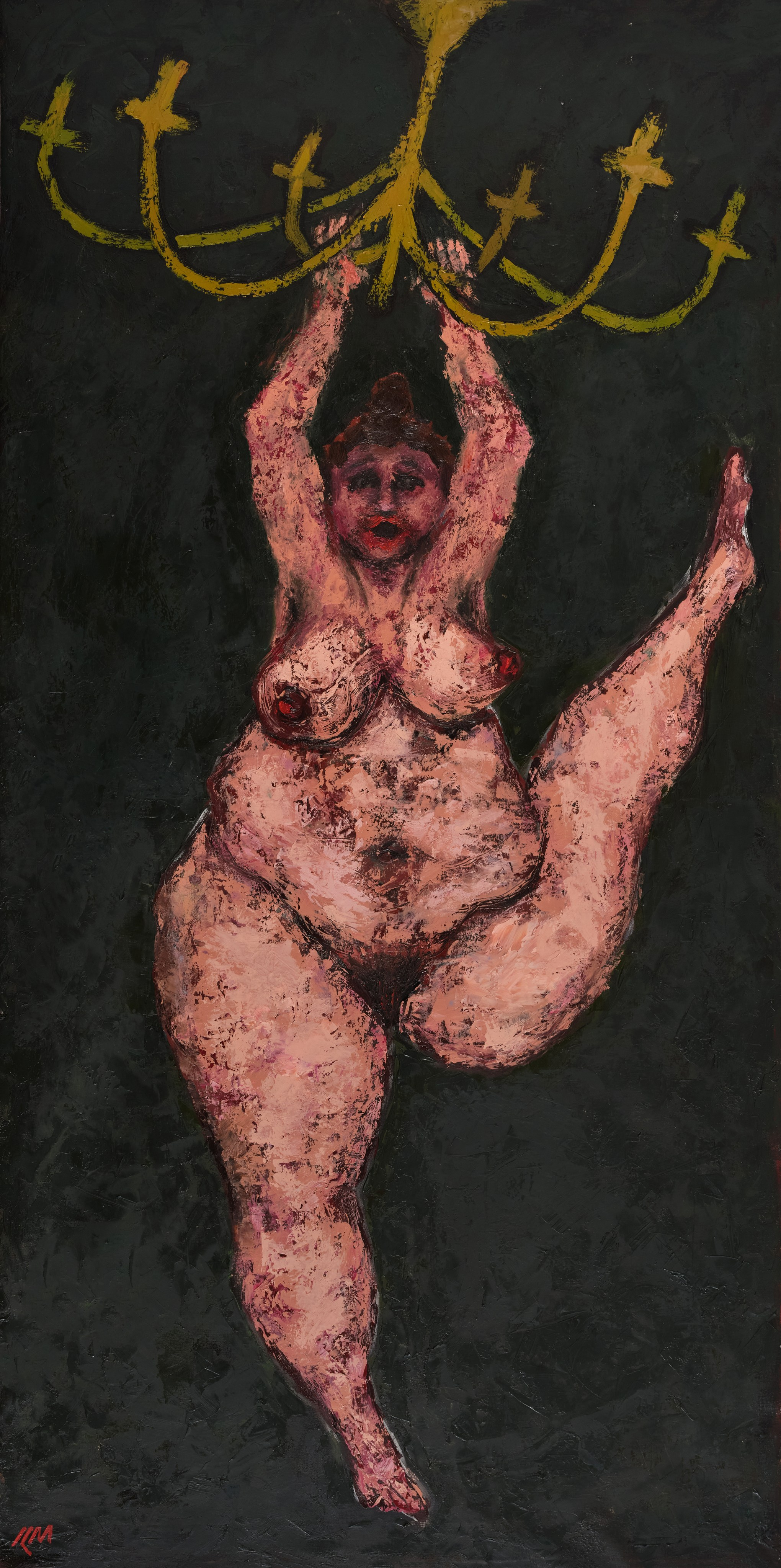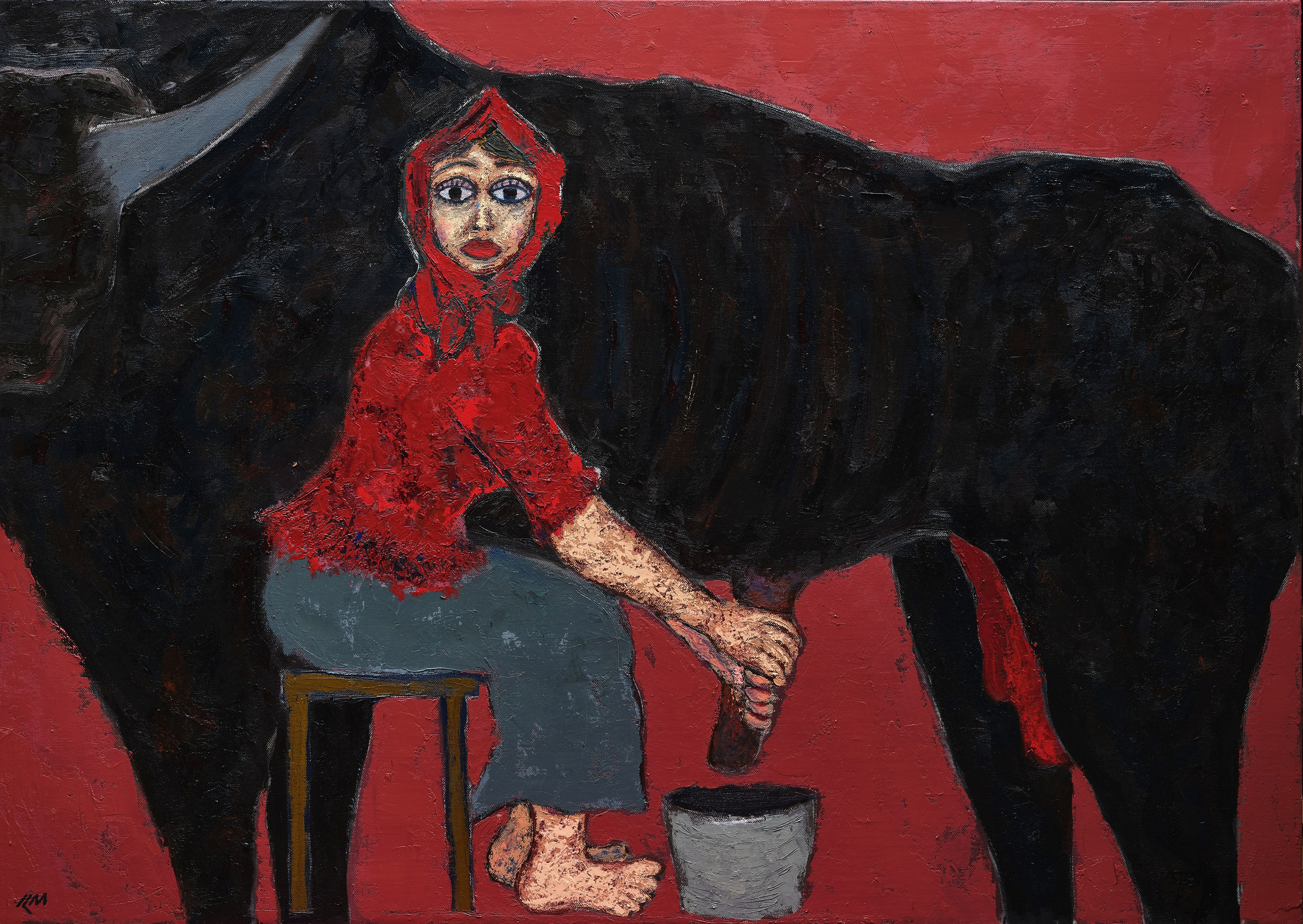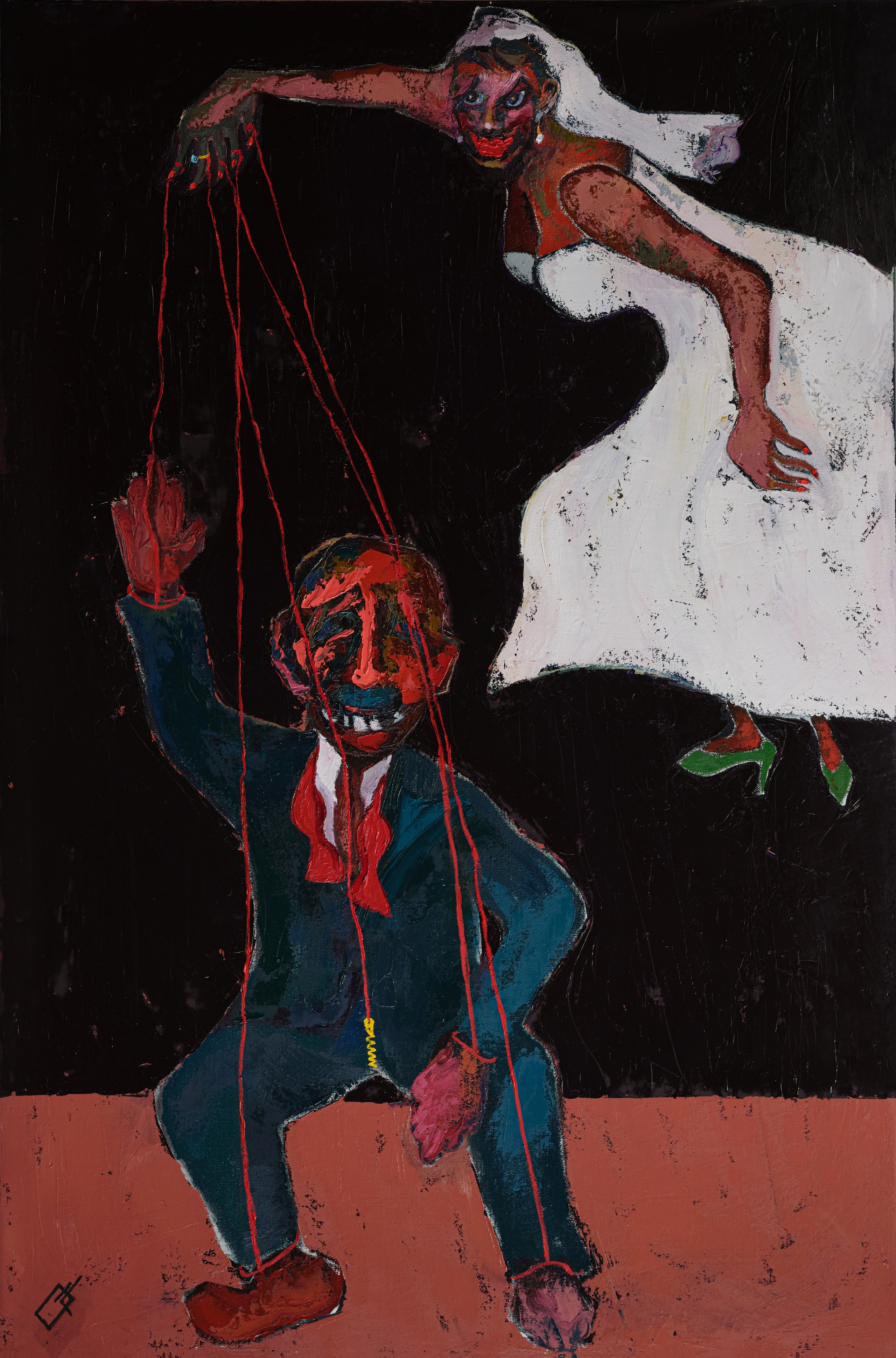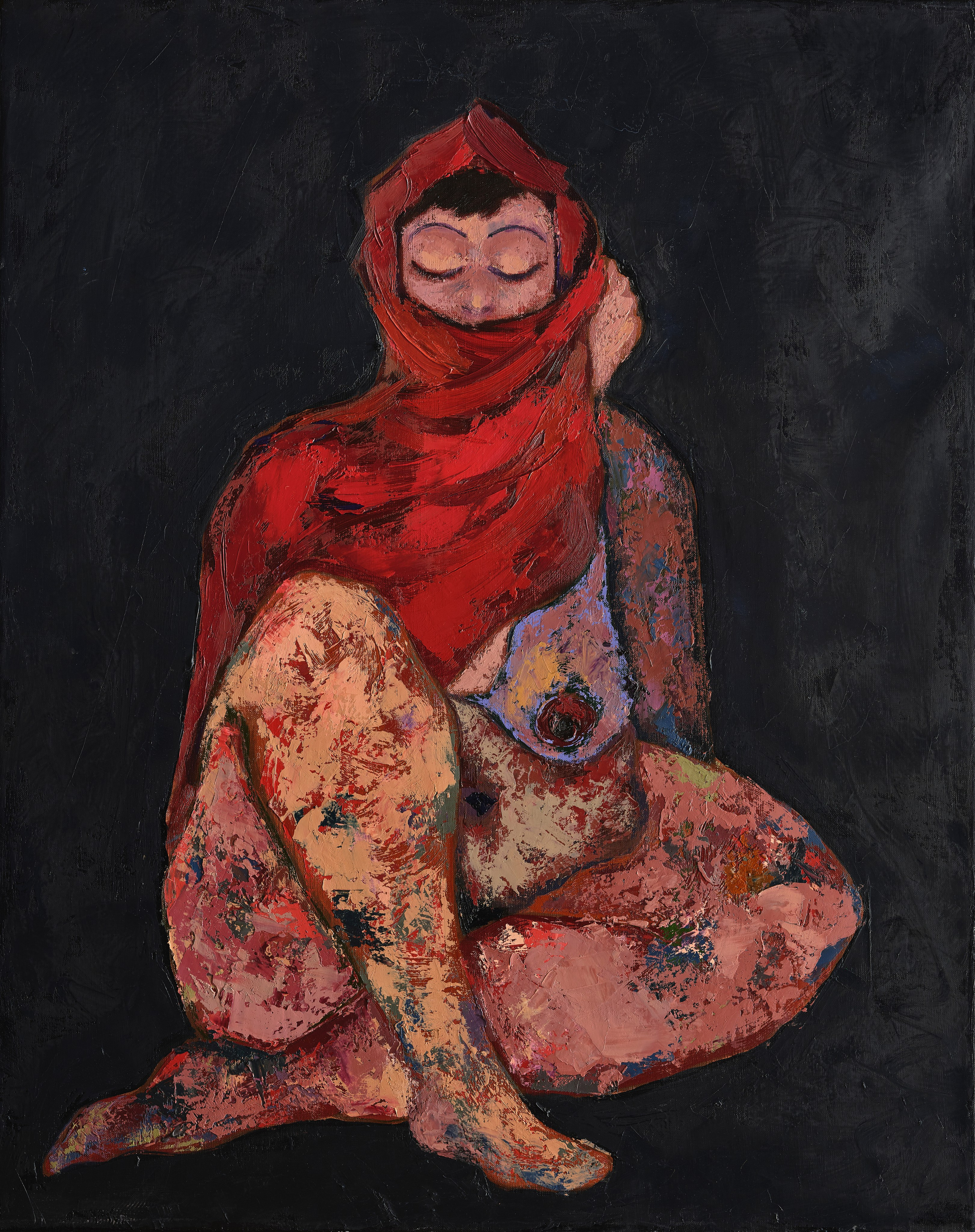Ideal
Medium Oil
Canvas Linen
Date 2024
Dimensions 210 × 140 cm
Edition 1/1
- Artwork provided with certificate of authenticity, signed by Kamran Mammadov
IDEAL
This artwork reflects a profound commentary on the human obsession with ideals, particularly regarding beauty, character, and societal expectations. The central figure—a hybrid of various animals and a human—symbolizes the unattainable and distorted concept of perfection. Each individual feature (giraffe, zebra, elephant, deer, horse, whale, woman face, and woman leg) is beautiful in its own right when isolated. However, when combined into one entity, it becomes grotesque and unnatural. This irony challenges the idea that assembling “perfect” traits from different sources can create something universally appealing. Instead, it underscores that perfection is subjective and inherently flawed when forced into a singular “ideal.”
Key Themes and Symbolism
- The Central Figure (Unrealistic Ideals):
- The amalgamation of different animal and human traits serves as a metaphor for the unrealistic standards imposed by society, particularly on women.
- The figure represents the impossibility of meeting everyone’s expectations simultaneously—beauty, strength, grace, and individuality cannot coexist in a single, “idealized” form.
- The grotesqueness of the figure challenges viewers to reconsider their own biases and expectations, emphasizing that striving for an impossible standard leads to rejection rather than admiration.
- The Six Men (Human Senses and Rejection of Ideals):
- The six men symbolize the human senses (hearing, seeing, smelling, feeling, tasting, and the “sixth sense” of intuition or perception). Their physical gestures—covering ears, eyes, nose, mouth, and holding their body—represent an instinctive rejection of the “ideal” figure.
- This rejection suggests that when we attempt to synthesize disparate qualities into one form, the result is alienating and incompatible with natural human appreciation.
- The Background (Complexity of Life):
- The layered colors in the background highlight the complexity and diversity of the world we live in. It signifies that beauty and individuality emerge from variety and uniqueness rather than homogenization.
- The chaotic environment symbolizes the countless influences—cultural, societal, and personal—that shape perceptions of beauty and ideals.
- Irony and Social Commentary:
- The painting critiques societal efforts to create a singular “ideal, ” whether in beauty, personality, or character. It questions the cultural pressures placed on individuals, particularly women, to embody perfection according to arbitrary and often conflicting standards.
- The grotesque figure serves as a warning: in pursuing perfection, we risk losing authenticity and beauty.
Key Takeaways:
- No Universal Ideal: There is no single form of beauty, character, or personality that satisfies everyone. Diversity is what makes individuals unique and valuable.
- Rejection of Unrealistic Standards: The visceral reaction of the six men reflects humanity’s innate discomfort with artificial and forced ideals.
Embracing Imperfection: The painting calls for acceptance of individual qualities rather than attempting to merge them into a singular, “ideal” form.

